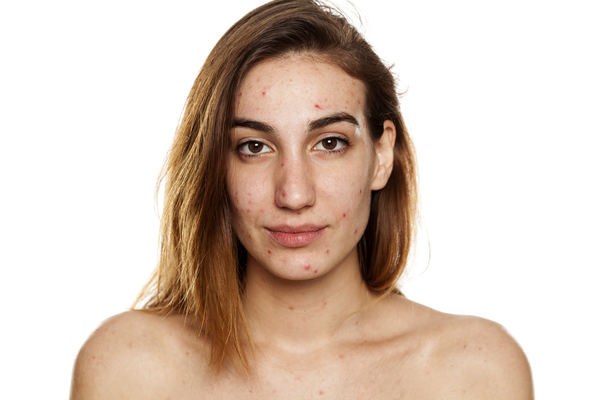Understanding the Different Types of Facial Acne
 Facial acne is a common skin condition that affects millions of people worldwide, regardless of age or gender. Facial acne not only impacts physical appearance but can also affect self-esteem and emotional well-being. Understanding the different types of acne on the face and how to manage it is crucial for maintaining healthy skin and confidence.
Facial acne is a common skin condition that affects millions of people worldwide, regardless of age or gender. Facial acne not only impacts physical appearance but can also affect self-esteem and emotional well-being. Understanding the different types of acne on the face and how to manage it is crucial for maintaining healthy skin and confidence.
What is Facial Acne?
Facial acne is a common skin condition characterized by the appearance of various types of blemishes on the face. It occurs when hair follicles become clogged with oil and dead skin cells, leading to the formation of pimples, blackheads, whiteheads, or more severe forms like nodules and cysts. Facial acne is most commonly associated with adolescence due to hormonal changes, but can affect people of all ages. The condition can range from mild to severe.
Common Types of Acne on the Face
Acne on the face can manifest in various forms, each requiring a unique approach to treatment. Here are the primary types of acne on the face:
- Blackheads (Open Comedones): These small, dark spots appear when hair follicles become clogged with oil and dead skin cells but remain open. The dark appearance is due to oxidation when exposed to air.
- Whiteheads (Closed Comedones): Whiteheads form similarly to blackheads but remain closed beneath the skin’s surface. They appear as small, flesh-colored bumps.
- Papules: Papules are small, red, inflamed bumps that occur when oil and bacteria irritate the hair follicle walls.
- Pustules: These are similar to papules but are filled with pus, making them appear white or yellow at the center with a red base.
- Nodules: Nodules are large, painful lumps deep within the skin caused by clogged and inflamed pores. They often require medical intervention.
- Cystic Acne: The most severe type of acne on the face, cystic acne involves painful, pus-filled lumps beneath the skin. It can lead to scarring if not treated properly.
What Causes Acne on the Face?
Understanding what causes acne on the face is critical to preventing and managing breakouts. Several factors contribute to the development of facial acne:
- Excess Sebum Production: Overactive sebaceous glands produce too much oil, leading to clogged pores.
- Clogged Hair Follicles: Dead skin cells can accumulate and block pores, trapping oil and bacteria.
- Bacteria: The bacterium Cutibacterium acnes (formerly Propionibacterium acnes) thrives in clogged pores, causing inflammation and acne.
- Hormonal Changes: Fluctuations in hormones, especially during puberty, menstruation, pregnancy, or stress, can increase oil production and trigger face acne.
- Diet: Foods high in refined sugars and dairy may contribute to acne on the face.
- Stress: Stress can exacerbate acne by increasing hormone levels that stimulate oil production.
- Cosmetic Products: Comedogenic makeup or skincare products can block pores and worsen facial acne.
- Genetics: A family history of acne may increase the likelihood of developing it.
How to Treat Face Acne
The best approach to treating face acne depends on its severity and type. Here are some effective methods:
- Over-the-Counter Treatments:
- Benzoyl Peroxide: Reduces bacteria and inflammation.
- Salicylic Acid: Helps exfoliate and unclog pores.
- Retinoids: Promote cell turnover to prevent clogged pores.
- Prescription Medications:
- Topical Antibiotics: Reduce bacteria and inflammation.
- Topical Retinoids: Stronger than OTC – unclog pores
- Oral Antibiotics: For moderate to severe acne on the face.
- Spironolactone: Works in some women by blocking hormones from causing flares
- Isotretinoin: A powerful option for severe, resistant acne.
- Lifestyle Changes:
- Maintain a consistent skincare routine.
- Avoid touching or picking at your face.
- Cleanse your face twice daily with a gentle, non-comedogenic cleanser.
- Professional Treatments:
- Chemical Peels: Help exfoliate and reduce acne scars.
- Laser Therapy: Targets bacteria and inflammation.
- Extraction: A dermatologist or dermatology provider can safely remove blackheads and whiteheads.
When to See a Dermatologist for Face Acne
If over-the-counter treatments fail to improve your facial acne or if the condition worsens, it’s time to consult a dermatologist. A dermatology provider can:
- Diagnose the specific types of acne on the face.
- Recommend tailored acne treatments based on your skin type and acne severity.
- Provide advanced therapies like cortisone injections or prescription medications.
Additionally, if acne is causing significant emotional distress or leaving scars, a dermatology specialist can offer solutions to restore skin health.
Facial Acne Treatment at Schweiger Dermatology Group
At Schweiger Dermatology Group, we understand how frustrating and challenging managing facial acne can be. Our expert dermatologists and dermatology providers specialize in diagnosing and treating all types of facial acne, from mild breakouts to severe cystic acne. Schedule online or call 844-DERM-DOC to make an appointment.
